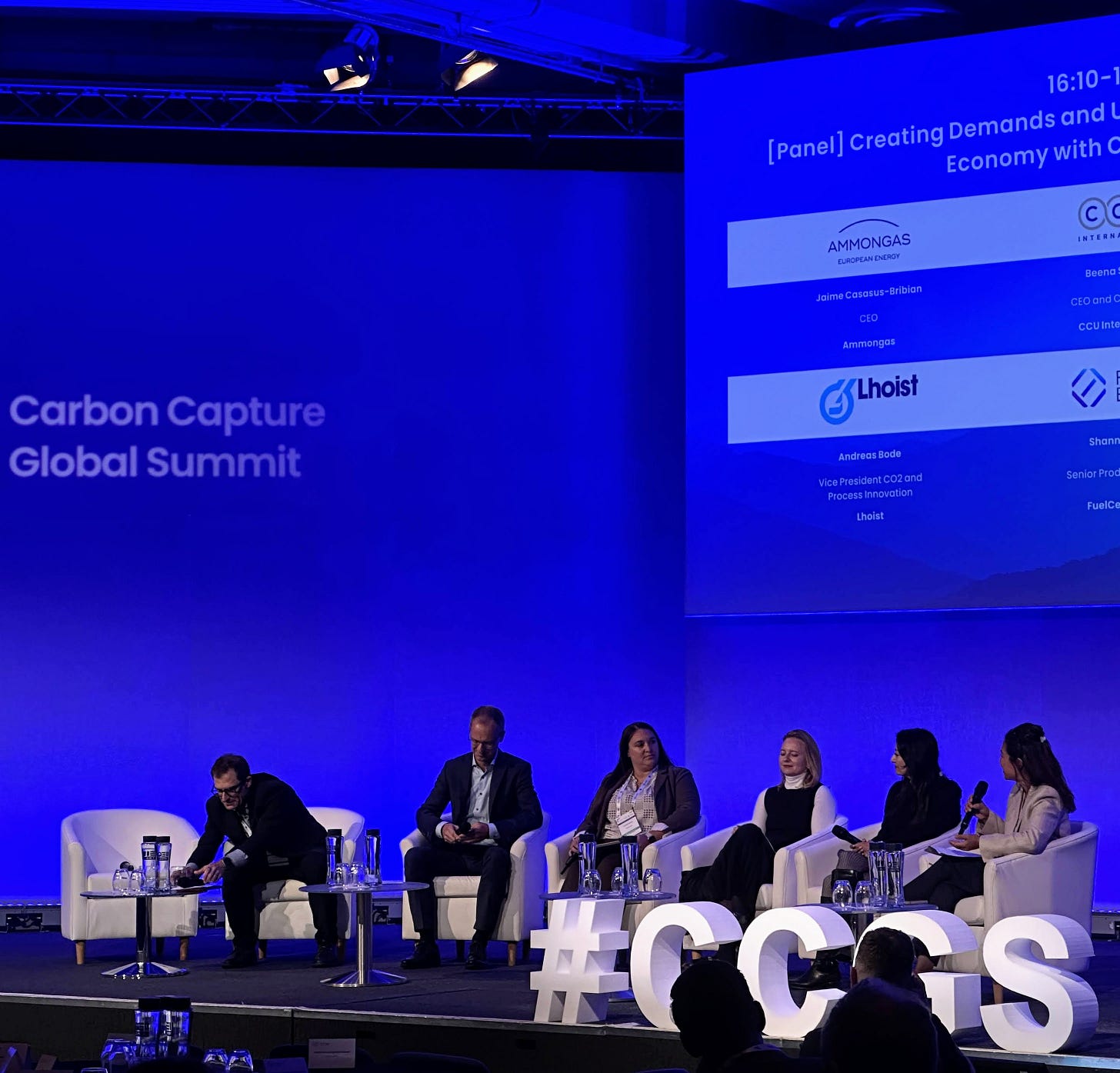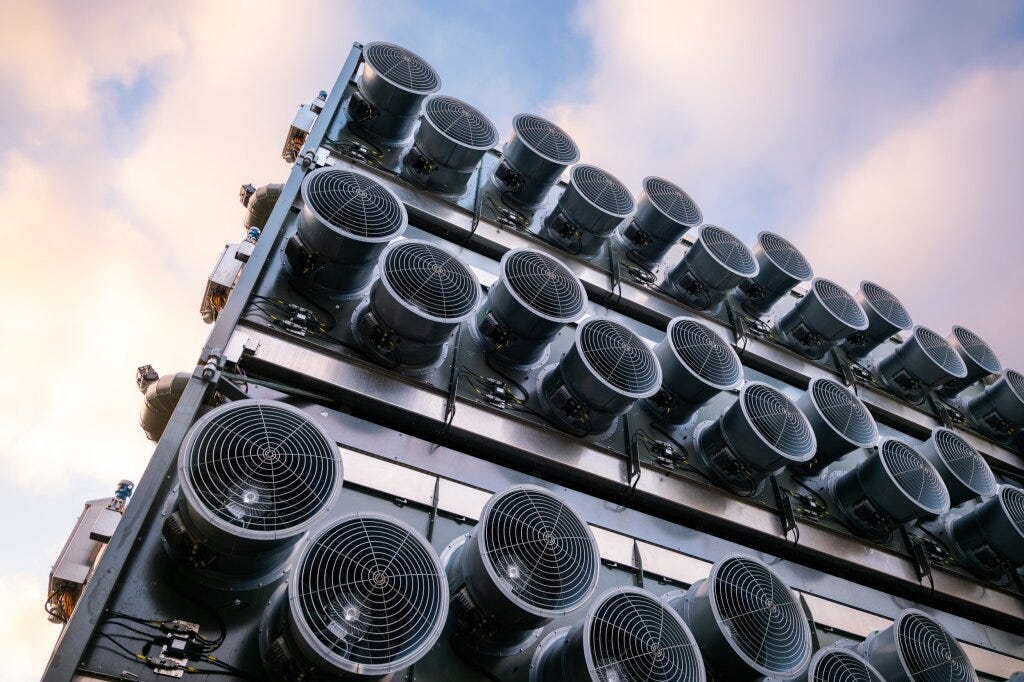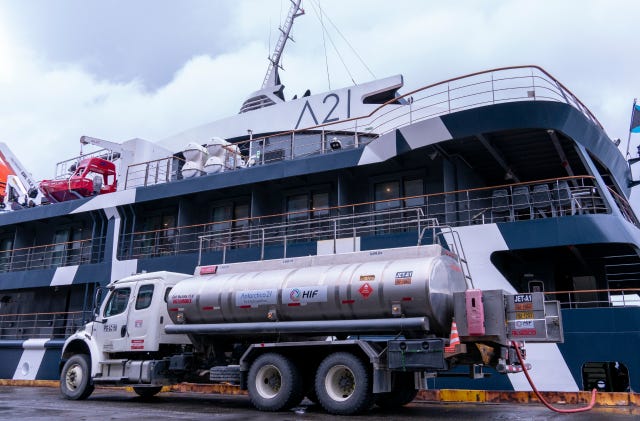Bury or burn? The dilemma facing the future of captured carbon
A crisis in carbon capture is forcing a tough choice: with too little CO2 captured and too few places to put it, should we stop burying it and start using it for fuel?
At London's Carbon Capture Global Summit on September 3, industry executives said there’s insufficient captured CO2 available for purchase. The same week, researchers published a paper saying that we might be unable to store nearly as much CO2 underground as safely or extensively as assumed. Could this storage crisis actually make the case for using CO2 in fuels instead of burying it?
When supply can't meet demand
The problem became clear in the final session at the Carbon Capture Global Summit.
"You'd think CO2 is widely available, but there's not a ton of CCS projects running to us trying to sell us their CO2," revealed Lee Beck from HIF Global, which produces e-methanol for Porsche and plans to make sustainable aviation fuel.
And this isn't just about finding any CO2 — it's about finding the right quality. For sustainable aviation fuels, the CO2 needs to be incredibly pure. "For an e-fuel, you have to be around 10 parts per billion," explained Jaime Casasus-Bribian from Ammagas. "If you're more than that, the catalyst gets poisoned."
Food companies can use CO2 that's ten times less pure, creating a hierarchy where aviation pays premium prices for premium purity.
The storage reality check
The discussion of this supply shortage couldn't have been more timely. The same week, researchers published findings suggesting the world has far less underground storage space for CO2 than previously thought.
The study, published in Nature and later covered by the Financial Times, asked a deceptively simple question: if we want to store CO2 underground safely, how much space do we actually have? The answer shocked many.
Previous estimates suggested we could bury decades’ worth of global emissions underground. But when researchers applied strict safety rules — avoiding earthquake zones, city areas, nature reserves, and anywhere too deep or risky — that capacity shrank by 90%.
Even if we used every bit of this "safe" storage space purely to remove CO2 from the atmosphere, it would only cool the planet by less than one degree Celsius. The paper implies that, as a result, we probably can't rely on burying CO2 to address climate change.
However, if storage space is limited, turning CO2 into valuable products like fuels may become even more important.
The industry backlash
Not everyone bought the Nature study's conclusions. The research sparked heated online debates, with some calling it a useful "reality check" while others dismissed it as overly cautious.
Some industry experts pointed out specific problems with the study. Dutch consultant Margriet Kuijper noted that it ruled out old gas fields that have never had earthquakes and could actually be made safer by filling them with CO2.
Meanwhile, Jack Andreasen Cavanaugh from Carbon Upper Middle Management argued the study only looked at one type of underground storage while ignoring options like volcanic rock.
Oxford Professor Jan Rosenow, however, supported the view articulated in the Nature paper that we should save limited storage space "for unavoidable emissions, not to prolong fossil power."
East vs. West: Two different strategies
The summit panel revealed these aren't just technical disagreements. They reflect fundamentally different regional approaches to CO2.
Western countries are investing billions in permanent underground storage. But developing nations see captured CO2 differently. "When you go to Asia, the Middle East, they're not interested in storing large quantities of CO2," observed Beena Sharma from CCU International. "They want to create green infrastructure."
Singapore exemplifies this approach: 3% of the country's GDP comes from exporting chemicals. Instead of importing fossil materials to make these products, Sharma said Singapore could, for example, capture CO2 and turn it into "high-value, sustainable, and low-carbon" chemicals.
The transport economics problem
Distance matters more than purity when it comes to costs, a key factor in alternative fuels.
"The climate advantage gets diminished the further away your facility is, and you have to transport the CO2," Beck explained. "So, really, to get the least cost e-fuel, what you're looking for is a CO2 that's pretty close to you."
This proximity principle could reshape the industry. If the Nature study is correct and storage space is limited, local networks that turn CO2 into products become more attractive than long-distance pipelines to burial sites.
The bottom line for aviation
Aviation faces a straightforward supply chain problem. E-fuels need ultra-pure CO2, but there isn't enough being produced yet. Meanwhile, the carbon capture industry is divided on whether to focus on permanent storage or turning CO2 into products.
This uncertainty makes it harder for airlines to plan their decarbonisation strategies. Should they invest in e-fuel facilities, assuming CO2 will be available? Should they lobby for more storage-focused policies? Or should they hedge their bets with multiple approaches?
The debate over the Nature study highlights this challenge. If the researchers are right about limited storage space, utilisation becomes more important. If the Nature paper’s critics are right about the study being too conservative, storage remains a viable option alongside utilisation.
Either way, aviation needs the carbon capture sector to scale up quickly, whether for storage, utilisation, or both.
The panel "Creating demands and unblocking the future of the circular economy with CO2 utilisation" took place on September 3, 2024, at the Carbon Capture Global Summit in London. Participants: Trinh Chubbock (Gibson Dunn, Moderator), Jaime Casasus-Bribian (Ammongas), Andreas Bode (Lhoist), Shannon Watt (FuelCell Energy), Lee Beck (HIF Global), and Beena Sharma (CCU International).





